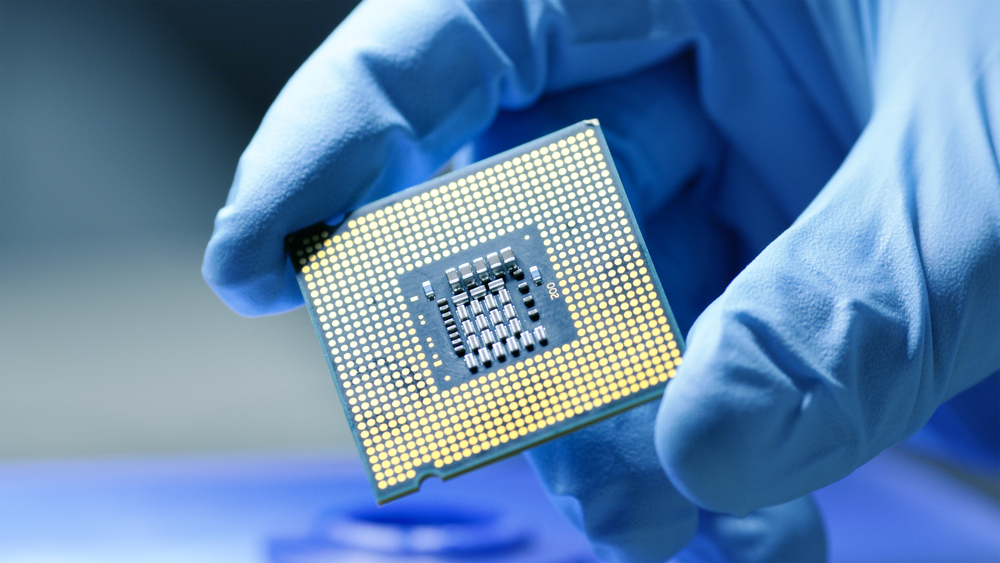New Delhi: The government Monday cleared a proposal of Kaynes Semicon to set up a Rs 3,307-crore semiconductor unit in Sanand, Gujarat, that will have the capacity to churn out 6.3 million chips a day.
Addressing reporters after the Union Cabinet meeting, IT Minister Ashwini Vaishnaw noted that a complete semiconductor ecosystem is coming up in India under the India Semiconductor Mission, and promised that the country will take a long-term view of this “foundational” sector and increase the outlay, as needed.
He likened the semiconductor industry to steel and chemicals industries which feed into many other allied sectors, and said the sector will be “crucial” for India’s growth and the industrial production blueprint of the country.
The minister said that the progress of Tata’s fab, a complex project, has been “very good”, and added that land has been allocated, and geo-technical investigations are done.
“Today, the Cabinet has approved Kaynes’ plant, with a capacity of 6.3 million chips per day. The plant will come up in 46 acres, it is a big plant and large portion of the production will go for Kaynes Industries, it has already been booked,” the minister said.
The plant will also cater to chips related to the power sector. The company has already acquired land in Sanand, Gujarat for the project, and construction will start soon.
The proposed investment for the unit is about Rs 3,307 crore.
Chips produced in this unit will cater to a wide variety of applications which include segments such as industrial, automobile, electric vehicles, consumer electronics, telecom, and mobile phones amongst others.
“Power-related chips..chips used in automobiles and home appliances, will also be produced in this plant,” Vaishnaw said briefing reporters.
Giving an update on Tata’s Dholera plant, the minister informed that land acquisition has already been done for the “massively large and complex project”.
It is pertinent to mention here that Tata Electronics will set up a semiconductor fab in partnership with Powerchip Semiconductor Manufacturing Corp (PSMC) of Taiwan. This fab will come up at Dholera in Gujarat, and entail an investment of Rs 91,000 crore.
Known for its expertise in logic and memory foundry segments, PSMC has six semiconductor foundries in Taiwan.
“Tata’s plant in basically a fab which is being done in assocation with a JV with Powerchip of Taiwan. It is a massively large and complex project. It will be operational at the 28-nm node. So the design work for the entire plant has been done,” the minister said.
The technology pacts are being negotiated between various partners, he said terming the progress of the Tata’s project as “very good”.
“…it was approved in January of this year. Within such a short timeframe a lot of work has already happened. Land is allocated, the geotechnical investigations are done. Whatever needs to be done for manufacturing, giving the final design of the plant, all those inputs are now ready,” he said.
On the status of Micron’s project, the minister said that the first Made in India chip will come up in the middle of next year.
In June last year, Micron announced an investment of $825 million to set up a new assembly and test facility in Gujarat.
Kaynes said the employability from Kaynes’ and other semiconductor-related projects in India needs to be seen in the context of a multiplier impact that semiconductor has as a foundational industry.
“When we look at employment generation potential of semiconductor plant, we have to think like a steel plant, chemical, plastic plant or refinery…as foundational industry that feeds into many industries,” he said.
The electronics manufacturing sector alone is growing at nearly 17-18 per cent CAGR, he said, emphasising the sheer demand for chips in India.
“That industry itself requires a lot of semiconductors. If we have semiconductor manufacturing in India then the multiplier for electronics manufacturing, or automobile manufacturing, appliance manufacturing, power electronics becomes important, and those industries get a boost,” the minister noted.
On whether outlay for the semiconductor scheme will be raised, Vaishnaw said that Indian Semiconductor Mission is a program that takes a 10-year view.
“The semicon mission is a programme for 10 years minimum…this industry will be crucial for the country’s growth for India’s industrial production…we have a large automobile industry, we have a very large electronics manufacturing industry coming up in our country. A large number of appliances are now made in India,” he said, adding that the success of Make-in-India will be scripted on foundational industries like semiconductors.
“So this is a long programme…there will be increased outlay for sure, we will come back with details of the program as and when they are finalised,” Vaishnaw said.
The programme for the Development of Semiconductors and Display Manufacturing Ecosystem in India was notified in December 2021 with a total outlay of Rs 76,000 crore.
PTI
